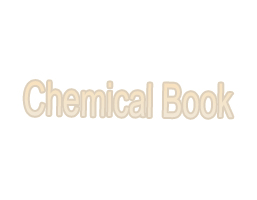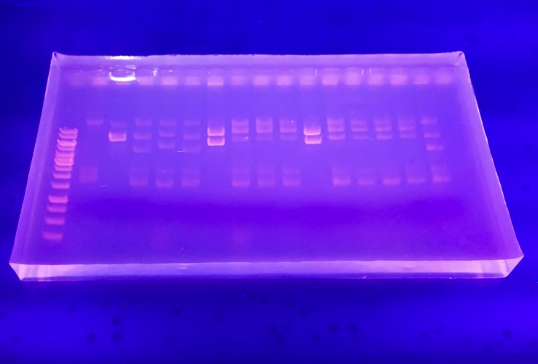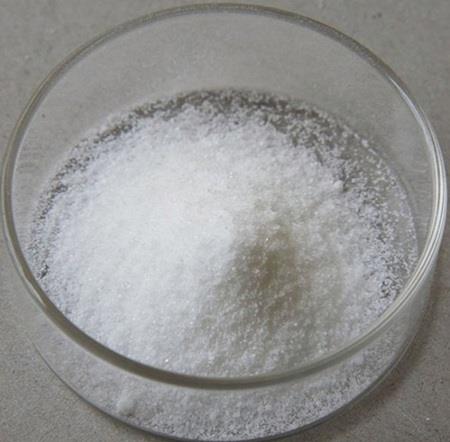Biomedical Application of Agarose
Introduction
Agarose (Figure 1), a natural polysaccharide obtained from red algae, is a linear polysaccharide consisting of D-galactose and 3,6-anhydrous-L-galactose with many hydroxyl groups in its structural unit [1], which readily form hydrogen bonds with hydrogen atoms in the structure or with those of water. Its molecular weight is generally between 80 kDa ~ and 140 kDa. Agarose can form a controlled hydrogel with stability and hysteresis [2]. As shown in Figure 2, at 90-100℃, the hydrogen bonds between the structural units of agarose break, and agarose are dispersed into the water as random coils to form a clear solution. When the temperature is lowered to 30-40℃, the molecular chains of agarose are intertwined by hydrogen bonds, forming a double helix structure that is tightly arranged to form a gel. According to recent research, the global agarose market looks promising for the next five years. The global agarose market was estimated to be USD 83.35 million by 2022 and is expected to reach USD 99.35 million by 2028, growing at a compound annual growth rate of 2.97% in the forecast years [3]. The end user segment of agarose is mainly in the biomedical sector, which includes academic institutions, hospitals, diagnostic centers, pharmaceuticals, and biotechnology. The regional features of this market include Asia Pacific, Europe, North America, the Middle East and Africa, and Latin America [3].
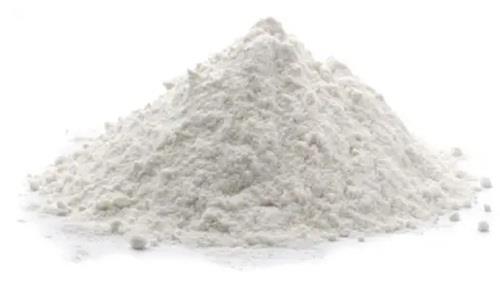
Agarose is a natural source of neutral gel polysaccharide, which plays an important role in the biomedical industry. It can inhibit the growth of bacteria on the surfaces of medical devices because of its low viscosity as an antimicrobial material. The excellent biocompatibility of agarose makes it suitable as a hydrogel for the controlled release of drugs and materials for tissue engineering. Agarose gel is electrically neutral and rigid; therefore, it is widely used as a filling material for gel electrophoresis and separation media. Agarose can be modified by compounding or grafting with other materials to provide specific adhesion and a pH response,making agarose more promising for tissue regeneration and other application.[4]

1.Encapsulating therapeutic cells in RGD-modified agarose microcapsules.
Current cell-based strategies for repairing damaged tissue often show limited efficacy due to low cell retention at the site of injury. Encapsulation of cells within hydrogel microcapsules demonstrably increases cell retention but benefits can be limited due to premature cell escape from the hydrogel microcapsules and subsequent clearance from the targeted tissue. We propose a method of encapsulating cells in agarose microcapsules that have been modified to increase cell retention by providing cell attachment domains within the agarose hydrogel allowing cells to adhere to the microcapsules. We covalently modified agarose with the addition of the cell adhesion peptide, RGD (arginine, glycine, aspartic acid). We then used a microfluidic platform to encapsulate single cells within 50 μm agarose microcapsules. We tracked encapsulated cells for cell viability, egress from microcapsules and attachment to microcapsules at 2 h, 24 h, and 48 h after encapsulation. Many encapsulated cells eventually egress their microcapsule. Those that were encapsulated using RGD-modified agarose adhered to the outer surface of the microcapsule following egress. NIH 3T3 cells showed nearly 45% of regressed cells attached to the outside of RGD modified agarose microcapsules, while minimal cellular adhesion was observed when using unmodified agarose. Similarly, human umbilical vein endothelial cells had up to 33% of egressed cells attached and explant-derived cardiac cells showed up to 20% attachment with the presence of RGD binding domains within the agarose microcapsules.[5]
2. Marine Agarose Biomaterials for Tissue Engineering Applications
Five agarose types (D1LE, D2LE, LM, MS8 and D5) were evaluated in tissue engineering and compared for the first time using an array of analysis methods. Acellular and cellular constructs were generated from 0.3-3%, and their biomechanical properties, in vivo biocompatibility (as determined by LIVE/DEAD, WST-1 and DNA release, with n = 6 per sample) and in vivo biocompatibility (by hematological and biochemical analyses and histology, with n = 4 animals per agarose type) were analyzed. Results revealed that the biomechanical properties of each hydrogel were related to the agarose concentration ( p < 0.001). Regarding the agarose type, the highest ( p < 0.001) Young modulus, stress at fracture and break load were D1LE, D2LE and D5, whereas the strain at fracture was higher in D5 and MS8 at 3% ( p < 0.05). All agaroses showed high biocompatibility on human skin cells, especially in indirect contact, with a correlation with agarose concentration ( p = 0.0074 for LIVE/DEAD and p = 0.0014 for WST-1) and type, although cell function tended to decrease in direct contact with highly concentrated agaroses. All agaroses were safe in vivo, with no systemic effects as determined by hematological and biochemical analysis and histology of major organs. Locally, implants were partially encapsulated and a pro-regenerative response with abundant M2-type macrophages was found. In summary, we may state that all these agarose types can be safely used in tissue engineering and that the biomechanical properties and biocompatibility were strongly associated to the agarose concentration in the hydrogel and partially associated to the agarose type. These results open the door to the generation of specific agarose-based hydrogels for definite clinical applications such as the human skin, cornea or oral mucosa.[6]
Conclusion
Focusing on the biomedical field, agarose, and modified agarose show great potential for application because of their unique physicochemical properties. A great deal of research on agarose and its derivatives is still needed, however, to improve green extraction and modification. Firstly, the source of agarose needs to be considered, including differences in the composition or molecular weight of agarose when extracted from seaweeds grown in different environments; it is also necessary to select more appropriate extraction and modification techniques for agarose and choose eco-friendly solvents to improve yield and quality. Furthermore, predicting the function of agarose gels by modulating chemical modifications is a challenge because the relationship between the chemical structure and mechanical properties of agarose still needs to be discovered.[4]
References
[1] Graham S, Marina PF, Blencowe A. Thermoresponsive polysaccharides and their thermoreversible physical hydrogel networks. Carbohydr Polym. 2019;207:143-159. doi:10.1016/j.carbpol.2018.11.053
[2] Lahaye M .Developments on gelling algal galactans, their structure and physico-chemistry[J].Journal of Applied Phycology, 2001, 13(2):173-184.DOI:10.1023/A:1011142124213..
[3] MarketWatch Global Agarose Market Analysis and Business Growth Outlook [2023-2030]. Available online: https://www. marketwatch.com/ (accessed on 12 April 2023).
[4] Jiang F, Xu XW, Chen FQ, et al. Extraction, Modification and Biomedical Application of Agarose Hydrogels: A Review. Mar Drugs. 2023;21(5):299. Published 2023 May 14. doi:10.3390/md21050299
[5] Dutcher M, Chewchuk S, Benavente-Babace A, et al. Encapsulating therapeutic cells in RGD-modified agarose microcapsules. Biomed Mater. 2023;18(5):10.1088/1748-605X/ace6e8. Published 2023 Jul 26. doi:10.1088/1748-605X/ace6e8
[6] Irastorza-Lorenzo A, Sánchez-Porras D, Ortiz-Arrabal O, et al. Evaluation of Marine Agarose Biomaterials for Tissue Engineering Applications. Int J Mol Sci. 2021;22(4):1923. Published 2021 Feb 15. doi:10.3390/ijms22041923
You may like
Related articles And Qustion
See also
Lastest Price from Agarose manufacturers
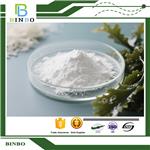
US $0.00/kg2025-10-13
- CAS:
- 9012-36-6
- Min. Order:
- 1kg
- Purity:
- Gel strength≥1200g/cm2
- Supply Ability:
- 1000 kg

US $1.00/KG2025-04-21
- CAS:
- 9012-36-6
- Min. Order:
- 1KG
- Purity:
- 99%
- Supply Ability:
- 10mt
